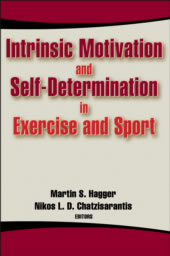MEDIA
REVIEW
media review written by Ted
Scheck
 There
is a triumvirate
of three basic psychological needs that all human beings consciously,
unconsciously, or subconsciously long for. Ladies and Gentlemen…the
envelope, please. And the winner…it seems we have a
three-way tie! In no particular order, tying for first place
in the Basic Psychological Needs Category are: There
is a triumvirate
of three basic psychological needs that all human beings consciously,
unconsciously, or subconsciously long for. Ladies and Gentlemen…the
envelope, please. And the winner…it seems we have a
three-way tie! In no particular order, tying for first place
in the Basic Psychological Needs Category are:
1. Competence.
2. Autonomy.
3. Relatedness.
Oh, I can relate.
When I read about these three researching intrinsic motivation
last year, it struck me (again) that even the simplest of
concepts, contexts, and constructs can be so power-fully compelling
that their simplicity somehow makes them mind-boggling. This
book hit me in a very visceral and emotional level in the
same way I got knocked to my rear in high school football
practice when I got distracted by something at precisely the
wrong time. I literally didn't know what hit me.
I grew up thinking I was the opposite of competent –
incompetent, unskilled – lacking in the abilities of
the 'good' kids in Gym class. I was a big, clunky, somewhat-clumsy
lad with terribly low self-esteem and no concept of goals
or objectives. Autonomy? Freedom? Liberty? Self-determination?
Hey, Scrabble aficionados! Let's look for a word that can
accurately describe the very opposite of being in control
of your own decisions and to be in some kind of harmony with
my integrated self. Chaos? Dependence? Chaotic Dependence?
I can relate so much. And speaking of being able to relate…3.
Relatedness. Connectedness. Fitting in socially.
This book was like a mental punch in the stomach. It brought
back some memories, but not all of them were bad. Sometimes,
to see where you currently are, you have to look back at where
you were. Being able to reflect upon my experiences as a kid
growing up in the 1970s, and putting it all into perspective,
can only help my youngest son, 13, who has the rest of 8th
grade ahead of him, and then (eek!) high school. Parents prepare
the next generation to take over and step up and swing at
those pitches that life inevitably throws at us. This book
is full of the reasons we step up to the plate, and the engines
that drive us to move. And the non-engines that keep us rooted
to one spot.
This is not a large book, but it's a book filled with large
and very interesting things, chiefly, about what motivates
and moves us, and the Dark Side of Motivation, which is motivation
pointed in the "off" position. It's about a macro
theory called 'Self-Determination
Theory.'
As I've already so painfully stated, people basically want
to be OK or good at many things, and really good at a few;
people want to feel as if they are captain of the ship that's
their body, and that they're an accepted and integral part
of school life. They want to feel and think and believe that
they belong, that their existence matters, even if it's at
times things get awkward, and the piece of the puzzle that
they represent might not exactly fit at that time, but it's
close.
I adopt this tone because I now teach 8th graders, who were
the original 5th graders when my school, Sidener Academy,
began 4 years ago. I've seen these kids move from funny, mostly-harmless
5th graders to the strange realm that is the 6th grade. From
there, into the dark waters of the drama known as 7th grade.
I recently read that the prepubescent brain is in a constant
state of flux. It's up, it's down, it's all around –
it's a mess that doesn’t believe it's a mess. Some neuroscientists
call this state 'insane' because it can change in half a heartbeat,
and change again just as fast. The state between child and
adult is chaotic, fearful, and very afraid of being
embarrassed and humiliated in the social sphere. I can relate.
So, shaking my head at the inanity of the 7th and 8th grader
minds, this book made a huge impact on me. It has shown me
that there are reasons why some kids choose to hardly move
in Gym class, or life. The social aspect for Middle Schoolers
is incredibly important. Chapter 1 – Exercise Participation
Motives, deals with the social reasons of why people
participate, and at what intensity, and why some personality
types are deathly afraid of participating for fear of ridicule.
Chapter 2 goes into detail about what exercise does to the
psyche and the brain, and how it opens up the channels for
learning to occur, and allow stress to diminish.
Chapter 3 begins with the fact that health problems occurring
later in life germinated and grew strong early in life. Find
the keys to motivate young people to see the benefits of exercise,
which will eventually fight off the ravages of cardiovascular
disease and obesity, and you've found the most important keys
in the world. The label on one of those keys is "MOTIVATION."
From there we delve into the corporate world of Motivational
Interviewing, in which health care companies conduct interviews
to track the reasons people exercise. Mikaly
Csikszentmihalyi, the author of the seminal
work Flow, and the Oscar Winner for "Most Unpronounceable
Name" (Cheek-Sent-Me-Hi-Ye) is mentioned in Chapter 7,
since flow and motivation often work together. Rounding off
Part I is a chapter on perceived feedback in Physical Education
and physical activity. Middle School Health and P.E. Teachers
out there – hey – pick up this book. It won't
explain the inexplicable behavior of absurdly hormonal teenagers,
but it will give you plenty of insights into the strange machines
that are twelves and tweens.
Part II and Chapters 9-17 get into Instrinsic Motivation
and SDT in Sport, Elite-level sports, and exercise. There
is even a chapter on coaching, and the ever-present problem
of Dropout Athletes, where the flow of motivation has completely
dried up in the drought that is the concept of amotivation.
This is one amazing little book that should get a lot of use.
 Biography: Biography:
Ted Scheck graduated from St. Ambrose College, located in
Davenport, Iowa, in 1985 with a BA in Physical Education,
and from 1985-89 he taught three years at Davenport Schools.
He moved to Indianapolis with his wife, Pam, in 1989 and taught
his first year at Indianapolis Public Schools. From 1990-2002
Ted worked as Director of Motion Analysis Laboratory at Riley
Hospital for Children. When the funding ran out for that job
he got back into teaching, and has been at various schools
in IPS since 2003.
Sidener Academy for High Ability Students opened in 2008
and Ted was chosen as the PE/Wellness teacher. Teaching has
been a long, and extremely interesting road for him, and at
the midpoint of his career he feels that the next 12 or 13
years should be the best of his career. He's looking forward
to it!
Ted is certified in Gifted Education from Ball St, University,
one of the few PE/Wellness teachers in Indiana to teach high-ability
students. PE is not covered by the definition of "gifted
& talented" so Mr. Scheck is working on creating
his own curriculum.
To Main MEDIA
Review Page
(back
to pelinks4u homepage) |




 There
is a
There
is a  Biography:
Biography: